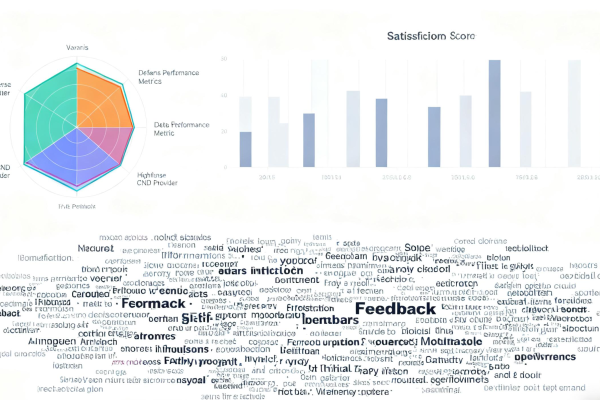Are Cheap Overseas CDNs Usable? A Comprehensive Analysis from Performance, and DDoS Protection to Stability (With Selection Advice)
Want to save money but worried about insufficient performance and anti-D capabilities? Today, we break down whether "cheap overseas CDNs" can meet real business needs by examining node layout, acceleration effectiveness, DDoS protection, stability, operational support, and payment methods, providing practical selection advice and alternatives for different scenarios.

With cross-border operations and global distribution becoming increasingly common, website owners and DevOps teams often face a practical problem: limited budget, yet needing to ensure user experience and website availability.
The market is flooded with cheap overseas CDNs (priced far below major provider/enterprise plans)------low annual fees, cheap pay-as-you-go traffic rates, and appealing marketing copy.
The question is: Are these cheap overseas CDNs actually usable? Will they fail at critical moments?
Today, we break down "usable" into quantifiable dimensions: performance (acceleration), defense (anti-D), stability (availability/failure rate), compatibility (protocols/scenarios), operational support, and payment methods,
and provide key testing points, pitfalls to avoid, and final selection advice to help you make the "right fit" choice with a limited budget.
I. Why Are Cheap Overseas CDNs So Cheap? Decoding the Cost Structure
To judge whether "cheap means usable," we first need to understand the sources behind the price difference:
- Low Investment in Nodes and Bandwidth
Cheap providers often deploy nodes in low-cost regions (certain tier-2 nodes or shared data centers), or use leased bandwidth/on-demand pools, resulting in insufficient node count and bandwidth redundancy. - Weakened Protection and Scrubbing Capabilities
Real T-level scrubbing, BGP blackholing, and distributed scrubbing centers are costly. Providers cutting corners simplify protection logic or rely on third-party scrubbing (extra cost) during large-volume attacks. - Fewer Service and SLO Commitments
Cheaper plans typically lack SLA guarantees, have short or paid technical support windows. When problems arise, you might just have to wait. - Feature Stripping
No support for QUIC/HTTP/2, edge computing, dynamic acceleration, or fine-grained WAF rules, relying on minimum cost to serve "static CDN" scenarios.
Conclusion: Cheap = Costs compressed on "nodes, bandwidth, scrubbing, operations." This determines what it's suitable for and what it's not.

II. Where Are Cheap Overseas CDNs Limited?
1) Performance (Acceleration) ------ Latency and Cache Hit Rate Are Key
- Node Distribution: Cheap providers often have lower node density. Being farther from users increases RTT. Delay-sensitive use cases like cross-border e-commerce, APPs, and gaming are most affected.
- Cache Policy and Hit Rate: Simple cache rules can lead to frequent origin pulls, increasing origin server load and potentially raising costs.
- Protocol Support: Lack of QUIC or HTTP/2 support reduces performance on mobile devices and unstable connections.
Conclusion: If your target users are concentrated in a specific region (e.g., Southeast Asia or the Americas), the few core nodes of a cheap CDN might suffice;
but when users are dispersed or the business is extremely latency-sensitive, cheap CDNs often fall short.
2) Defense (Anti-D) ------ Can It Protect Your Business During an Attack?
- Scrubbing Bandwidth: Small providers often claim "having scrubbing," but scrubbing bandwidth is often insufficient, quickly overwhelmed by 100Gbps level attacks.
- Intelligent Identification and False Positive Rate: Low-cost solutions often rely on static rules, unable to handle variant CC attacks, slow attacks, or hybrid attacks, with high risk of false positives/negatives.
- Origin Protection: Whether the origin IP is hidden, and the presence of BGP blackholing, Anycast to disperse attack traffic are core capabilities.
Conclusion: For businesses requiring high availability (finance, payment, gaming, live streaming, Web3 nodes), protection capability is non-negotiable.
Cheap CDNs suit "low-traffic, low-risk" sites.
3) Stability (Availability & Failure Recovery)
- Bandwidth Redundancy: To cut costs, cheap providers are more likely to use shared bandwidth, potentially causing congestion or rate fluctuations during peak hours.
- Failure Recovery Capability: Support for multi-path origin failover, automatic switching, and health check mechanisms all impact availability.
- Operational Response: Low price often means slow customer support response and long troubleshooting times.
Conclusion: For "must-be-online" businesses, stability is more important than price; cheap CDNs are better suited for non-critical tasks that "can tolerate short-term fluctuations."
4) Compatibility & Compliance (Protocols, Certificates, Logs)
- Support for TLS 1.3, detailed access logs, compliance (GDPR, etc.)------cheap providers might be lacking.
- API integration and automated deployment capabilities are often weakened.
III. How to Test if a "Cheap CDN is Good Enough" on a Limited Budget?
Before deciding on a cheap CDN, follow these three practical test steps:
- Small Traffic Trial (7-14 days)
- Test Nodes: Choose nodes where your real users are located (Southeast Asia, North America, Europe, etc.).
- Metrics: TTFB, First Contentful Paint, Cache Hit Rate, Abnormal Origin Pull Ratio.
- Stress/Attack-Defense Drill
- Simulate high concurrency (QPS), small sustained traffic attacks (CC), etc., check if scrubbing policies trigger, false positives occur, or origin is exposed.
- Stability Observation (Peak & Long Duration)
- Observe latency during peak hours, check for bandwidth usage fluctuations, and record customer support response time and resolution quality.
Note: Many cheap providers' "trials" limit key features (like protection or logs). Before signing, confirm if the trial is "full-featured."

IV. Typical Scenarios Where Cheap is Usable (Suitable for "Budget-First" Strategy)
Cheap overseas CDNs are often a "usable and cost-effective" choice in the following scenarios:
- Static Content Delivery: Images, CSS, JS, download resources, and when user regions are concentrated.
- Development/Test Environments: Temporary sites, staging environments, not affecting business revenue.
- Very Low-Traffic Personal Sites or Blogs: Not requiring high stability.
- Short-Term Marketing Landing Pages: Short campaign duration, high fault tolerance, usable as a temporary acceleration solution (but mind the risk of being blocked).
If your business involves transactions, payments, compliance, or high concurrency, it's not advisable to entrust critical paths to the cheapest solution.
V. How to Use Hybrid Deployment on a Limited Budget (Ensuring Experience & Saving Money)
In practice, many teams adopt a "hybrid deployment" strategy:
- Critical Traffic via Major Provider/High Defense (Paid): Route critical paths like login, payment, API interfaces through high-assurance nodes (e.g., enterprise plans or CDN07's high-defense套餐);
- Static Resources via Cheap CDN: Place images, static downloads, etc., on cheap CDNs or Object Storage + CDN;
- Dashboard & Automated Fallback: Once high-defense services alert or for cost control, automatically switch back to backup channels.
This split significantly reduces overall costs while securing critical business functions.
VI. Key Comparison Points: Cheap CDN vs. Enterprise CDN (Quick Table)
| Aspect | Cheap CDN (Budget-First) | Enterprise High-Defense CDN (e.g., CDN07) |
|---|---|---|
| Price | Very Low | Higher |
| Node Density | Sparse | Dense, Good Core Region Coverage |
| Protection Capability | Basic/Weak | T-level, AI Scrubbing, BGP Distributed Scrubbing |
| SLA | None or Weak | Signable SLA Available |
| Supported Protocols | Possibly Incomplete | HTTP/2/QUIC/TLS1.3, etc. |
| Support Response | Slow | 7x24, Professional Support |
| Payment Methods | Mainly Fiat | Supports USDT/BTC (Convenient for Cross-Border) |

VII. Cheap Overseas CDNs Are Usable, But "Consider the Scenario, Know How to Split, Test Before Committing"
- Usable: Cheap CDNs can fully meet needs in scenarios like "static distribution, low traffic, test environments, short-term campaigns."
- Not Fully Trustworthy: Facing large-scale attacks, financial/payment-critical services, or sustained high-concurrency scenarios, low-cost solutions often lack the required bandwidth scrubbing, intelligent identification, and rapid response.
- Practical Advice: Start with a full-feature trial (confirm inclusion of protection and logs), then conduct stress tests; use enterprise-grade high-defense or hybrid deployment for critical traffic; focus cost savings on "non-critical traffic."
VIII. If You're Looking for "Both Cheap and Stable" ------ My Advice (Including CDN07's Positioning)
- If you are a personal site owner / small blog / static showcase site: You can prioritize cheap CDNs, combined with object storage and sensible caching strategies.
- If you are in cross-border e-commerce / Web3 projects / gaming / finance: Definitely place critical interfaces and high-risk traffic on enterprise-grade high-defense CDNs. High-defense CDNs like CDN07, focused on the Asia-Pacific region and supporting USDT payments, are suitable for projects needing rapid deployment with hard protection requirements.
- If you have a limited budget but need assurance: Adopting hybrid deployment (critical business on high-defense, static resources on cheap CDN) is the most practical compromise.
Final Word:
Want to quickly verify your website's performance under real attacks and high concurrency? Start with a 7-day full-feature trial + stress test to personally verify scrubbing capabilities and response times.
Need recommendations or testing support? I can send you a packaged trial script and testing metrics checklist (includes setup steps, stress test commands, observation metrics).
Share this post:
Related Posts

Why Do CDN Prices Double? A Guide to the Technical Gaps Behind the Cost Difference
Why do seemingly similar CDNs have twice the price difference? This article breaks down core dispari...

How to Choose a High-Defense CDN? Understand These 5 Key Metrics, and You’ll Never Be Misled Again
The high-defense CDN market is highly competitive, with significant price differences. Many people e...

Overseas CDN Providers Without ICP Filing: Which Ones Offer Both DDoS Protection and High Speed?
Top Overseas No-Filing CDN Providers: Curated Acceleration Solutions for Foreign-Based Websites Acce...

